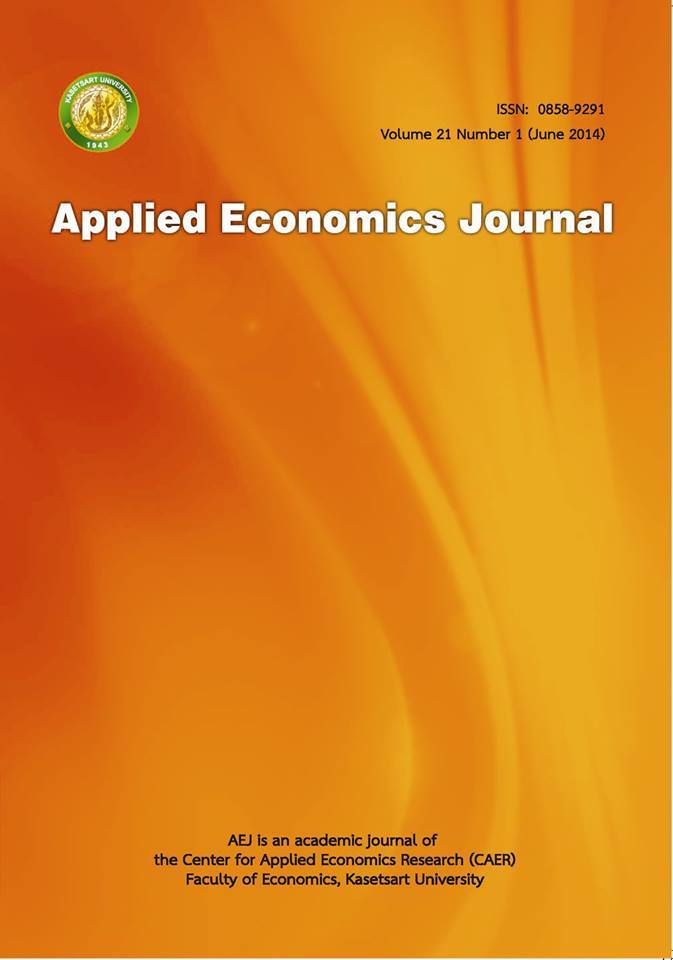Nominal Exchange Rate Variation and World Commodity Price Variation: The Cases of Australia, Canada, and New Zealand
Main Article Content
Abstract
World commodity prices have moved and fluctuated over time especially, the period 2000-2009. This paper examines the impact of Australia’s, Canada’s, and New Zealand’s nominal exchange rate variation on world commodity price variations in 1980-2012 and compare the impact between 1990-1999 and 2000-2009. This study employs a dynamic ordinary least square regression (DOLS) to estimate correlation coefficients that measure the volatility effects. The results show that in long-run (1980-2012), the Australian dollar, Canadian dollar, and New Zealand dollar variation raise the world commodity price variations for hard commodity which are fuel products and metal products while nominal exchange rate variation has various effects on the world commodity price variations for soft commodity which are grain products, forestry products, and livestock products. Moreover, comparison of the period 1990-1999 and the period 2000-2009 implies that exchange rate variation raises the world commodity price variations which almost price is hard commodity. Hence, the government of these hard commodities exporting countries should become aware of exchange rate variation and look after the variation because the variation causes income of export sector. In the case of developing countries, should consider exchange rate policy that impacts export sector and the economy along with give priority to future market development to be tools for absorb exchange rate variation risks.
Article Details
The paper is published under CC BY-NC-ND, in which the article is freely downloaded and shared in its original form non-commercially and its citation details are identified.


